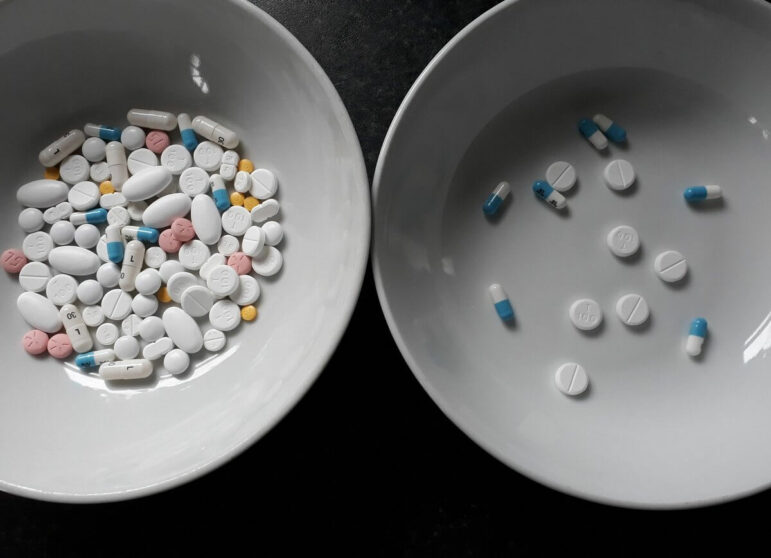Why are more and more older Americans being prescribed multiple medications, and what can clinicians, patients, and family members do about it?
On the radio program, The People’s Pharmacy on NPR, Shannon Brownlee, senior vice president of the Lown Institute, and Cynthia Boyd, professor at the Johns Hopkins School of Medicine and the Johns Hopkins School of Public Health, talked with program hosts pharmacologist Joe Graedon and medical anthropologist Terry Graedon about the drivers of—and solutions to—medication overload.
Every day, 750 older adults (age 65 and over) in the U.S. are hospitalized for an adverse drug event (ADE) due to one or more medications. A report by the Lown Institute published in April 2019 found that over the next decade, there will be 4.6 million hospitalizations and 150,000 deaths of older Americans from ADEs.
How has medication overload reached such epidemic proportions? Part of the reason is good news—people are living longer and more drugs are available to treat conditions. However, as the American population ages and drug advertising has exploded, prescription drug usage has climbed precipitously, with no one stopping to examine whether multiple drug use is really making us healthier or improving quality of life, said Brownlee. In fact, with every additional drug, older patients’ risk of having an ADE rises by 7-10 percent. Clinicians and patients both need to understand that medications are not the solution to all ailments, despite what pharmaceutical marketing tells us.
Brownlee and Boyd urge patients and caregivers to become engaged in their treatment decisions, to ask questions about medications that their doctors prescribe, and to ask for a “prescription checkup” to review their medications if they’re feeling overwhelmed by medication burden or side effects. “We assume that because specialists prescribe these drugs, that they’re necessary to live a good life, but that’s not always true,” said Brownlee. A prescription checkup can help identify which medications are right for the individual patient and deprescribe those for which the harm outweighs the benefit.
Another important thing patients can do is communicate to their doctors about what outcomes matter most to them. For example, if your health goal is to be able to stay active and walk around, and you’re less worried about your chance of having a stroke in 5-10 years, your doctor should know that. There are often tradeoffs in medication decisions, and “the only way to figure out the right way through is to know what matters most to patients,” said Boyd.
Brownlee and Boyd also pointed to clinical practice guidelines as a key driver of medication overload. Guidelines generally offer recommendations for patients with a specific condition, such as diabetes or kidney disease, but don’t always consider the fact that patients may have many conditions and take many drugs already. Thus, guidelines can “perpetuate the ‘single-disease approach’ to care,” said Boyd.
Because guidelines are often used as quality measures for evaluation, doctors may ramp up medications in order to hit clinical targets in guidelines, even though in many cases it’s not the right thing for the patient. “Guidelines have had a very powerful effect on the way doctors and other prescribers treat different diseases,” said Brownlee. It will take coordinated action from specialist organizations and clinicians to ensure that guidelines take into account the harms and benefits of medications for older adults with multiple chronic conditions.
The Lown Institute will be publishing an action plan to eliminate medication overload early next year. This six-point plan was developed by 22 experts on medication overload, including Boyd, and has recommendations for ways in which clinicians, policymakers, patient, and caregivers can take action to reduce harm from multiple medication use.
Listen to the full interview on The People’s Pharmacy and stay tuned for more about the action plan to eliminate medication overload!
